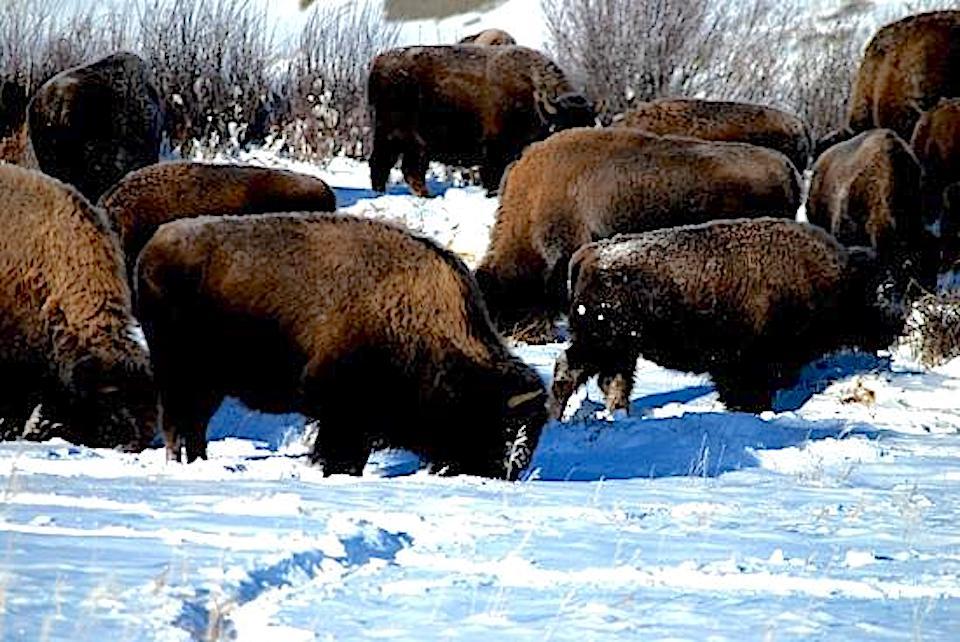
Bison culling operations have begun in Yellowstone National Park/Kurt Repanshek file
Work has begun at Yellowstone National Park to cull 600-900 animals from the park's bison herds, a process deemed necessary to keep the bison population in check but which is highly controversial.
There are an estimated 4,900 bison in Yellowstone, and back in December the Interagency Bison Management Plan partners recommended the culling number for this winter. The operation began Sunday, when bison started to move out of the park into the Gardiner Basin just to the north in Montana. The operation could continue through late March, park staff said Monday.
Last year 460 bison were culled.
The park's bison herds are to be reduced using three methods: 1) public and tribal hunting outside the park; 2) capturing bison near the park boundary and then transferring them to Native American tribes for processing and distribution of meat and hides to their members, and; 3) a quarantine program that results in brucellosis-free bison being moved to tribal lands.
Located in the northern section of the park near Gardiner, Montana, the Stephens Creek administrative area includes park corral operations, equipment storage, a native plant nursery, and the bison capture and quarantine facilities. The administrative area is closed to the public year-round.
Well aware of the negative publicity the culling operations can have, and of the objections of groups that don't see the need for culling, Yellowstone officials added in the culling release that unmanned aircraft (drones) are prohibited in the park.
On Yellowstone's website staff outlined why the culling is needed:
- Bison are killed because they do not have enough room to roam. Yellowstone encompasses a limited amount of habitat and Montana allows very limited numbers of bison in small areas adjacent to the park.
- Allowing the bison population to grow indefinitely could cause overgrazing in some areas and possibly mass starvation of animals in Yellowstone, as well as larger migrations and greater conflict outside the park.
- Yellowstone bison reproduce and survive at relatively high rates compared to many other large, wild, mammal species. The bison population currently increases by 10 to 17% per year.
- Currently, predation by bears and wolves has little effect in reducing the bison numbers. Bison are massive animals that defend themselves as a group, making them more difficult to attack than animals such as elk.
- Hunting outside the park has not been effective at limiting bison numbers because concentrated hunting pressure along the park boundary often causes bison to return to the security of the national park where hunting is prohibited.



Comments
Since civilization and the econoy of modern society has overtaken the world. The park system has created a living zoo of people watching animals anx anjmalz wstching people. The only way to manage an artficial environment is through artificial means. We can romanticize the "good 'ol days' but the best we can do is attempt to recreate an environment (including past cultures) in an attempt to "preserve" but in reality it no longer exists as it is in the past! Moving forward the only way to change our world is to change our consciousness from insatiable consumerism.....
All animals need to be managed leave it up to people that knows what needs done not anti hunters. Im from Colorado and there trying to outlaw mountain lion hunting those are the people you hope lions attack.